
Mario Monti is an Italian economist and academic who served as the Prime Minister of Italy from 2011 to 2013, leading a technocratic government in the wake of the Italian debt crisis.

The Union of the Centre, whose complete name is "Union of Christian and Centre Democrats", is a Christian-democratic political party in Italy.

Enrico Letta is an Italian politician who served as Prime Minister of Italy from April 2013 to February 2014, leading a grand coalition of centre-left and centre-right parties. He was the leader of the Democratic Party (PD) from March 2021 to March 2023.

Pier Ferdinando Casini is an Italian politician. He served as President of the Chamber of Deputies from 2001 to 2006.
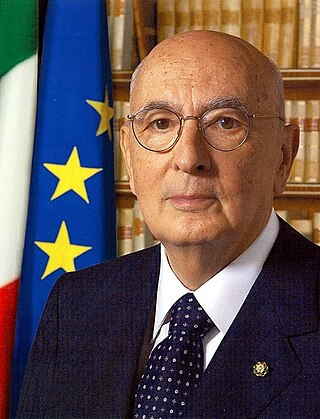
Giorgio Napolitano was an Italian politician who served as the president of Italy from 2006 to 2015, the first to be re-elected to the office. In office for 8 years and 244 days, he was the longest-serving president, until the record was surpassed by Sergio Mattarella in 2023. He also was the longest-lived president in the history of the Italian Republic, which has been in existence since 1946. Although he was a prominent figure of the First Italian Republic, he did not take part in the Constituent Assembly of Italy that drafted the Italian constitution; he is considered one of the symbols of the Second Italian Republic, which came about after the Tangentopoli scandal of the 1990s. Due to his dominant position in Italian politics, some critics have sometimes referred to him as Re Giorgio.
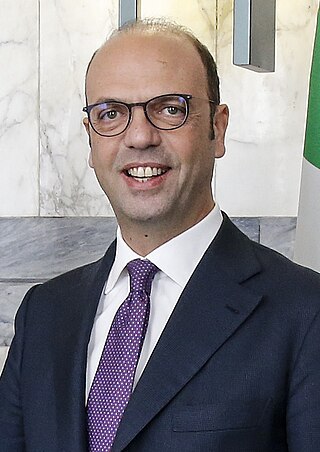
Angelino Alfano is an Italian former politician who served as Minister of Foreign Affairs from 12 December 2016 to 1 June 2018.

The Democratic Party is a social-democratic political party in Italy. The party's secretary is Elly Schlein, elected in the 2023 leadership election, while the party's president is Stefano Bonaccini.

The People of Freedom was a centre-right political party in Italy. The PdL launched by Silvio Berlusconi as an electoral list, including Forza Italia and National Alliance, on 27 February for the 2008 Italian general election. The list was later transformed into a party during a party congress on 27–29 March 2009. The party's leading members included Angelino Alfano, Renato Schifani, Renato Brunetta, Roberto Formigoni, Maurizio Sacconi, Maurizio Gasparri, Mariastella Gelmini, Antonio Martino, Giancarlo Galan, Maurizio Lupi, Gaetano Quagliariello, Daniela Santanchè, Sandro Bondi, and Raffaele Fitto.

The political career of Silvio Berlusconi (1994–2011) began in 1994, when Berlusconi entered politics for the first time serving intermittent terms as Prime Minister of Italy from 1994 to 1995, 2001 to 2006 and 2008 to 2011, his career was racked with controversies and trials; amongst these was his failure to honour his promise to sell his personal assets in Mediaset, the largest television broadcaster network in Italy, in order to dispel any perceived conflicts of interest.
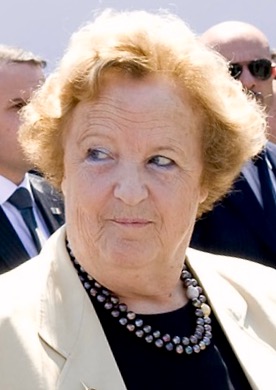
Annamaria Cancellieri is an Italian official and prefect who served as Minister of Interior in the Monti Cabinet and Minister of Justice in the Letta Cabinet.

The 2013 Italian general election was held on 24 and 25 February 2013 to determine the 630 members of the Chamber of Deputies and the 315 elective members of the Senate of the Republic for the 17th Italian Parliament. The centre-left alliance Italy Common Good, led by the Democratic Party (PD), obtained a clear majority of seats in the Chamber of Deputies thanks to a majority bonus that effectively trebled the number of seats assigned to the winning force and narrowly defeated the centre-right alliance of former Prime Minister Silvio Berlusconi in the popular vote. Close behind, the new anti-establishment Five Star Movement of comedian Beppe Grillo became the third force, well ahead of the centrist coalition of outgoing Prime Minister Mario Monti. In the Senate, no political group or party won an outright majority, resulting in a hung parliament.

Civic Choice was a centrist and liberal political party in Italy founded by Mario Monti. The party was formed in the run-up of the 2013 general election to support the outgoing Prime Minister Monti and continue his political agenda. In the election SC was part of a centrist coalition named With Monti for Italy, along with Union of the Centre of Pier Ferdinando Casini and Future and Freedom of Gianfranco Fini.

The Letta government was the 62nd government of the Italian Republic. In office from 28 April 2013 to 22 January 2014, it comprised ministers of the Democratic Party (PD), The People of Freedom (PdL), Civic Choice (SC), the Union of the Centre (UdC), one of the Italian Radicals (RI) and three non-party independents.

Beatrice Lorenzin is an Italian politician belonging to the Democratic Party, former leader of Popular Alternative, and former Minister of Health from 28 April 2013 to 1 June 2018, in the governments of Enrico Letta, Matteo Renzi and Paolo Gentiloni. In 2018 she became one of the longest-serving health minister in the history of the Italian Republic.
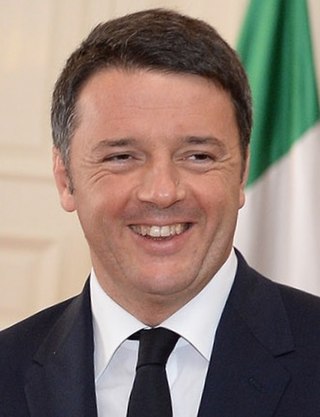
The Renzi government was the 63rd government of the Italian Republic, in office from February 2014 to December 2016. It was led by Matteo Renzi, secretary and leader of the centre-left Democratic Party (PD).
The centre-left coalition is a political alliance of political parties in Italy active under several forms and names since 1995, when The Olive Tree was formed under the leadership of Romano Prodi. The centre-left coalition has ruled the country for more than fifteen years between 1996 and 2022; to do so, it had mostly to rely on a big tent that went from the more radical left-wing, which had more weight between 1996 and 2008, to the political centre, which had more weight during the 2010s, and its main parties were also part of grand coalitions and national unity governments.
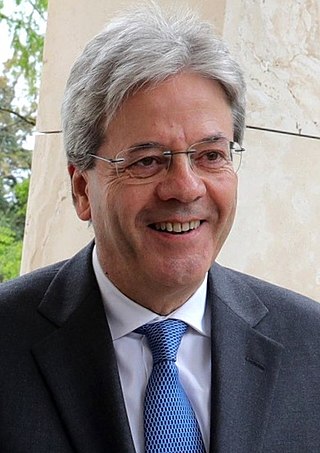
The Gentiloni government was the 64th government of the Italian Republic, in office from 12 December 2016 to 1 June 2018. The government was headed by Paolo Gentiloni, former Minister of Foreign Affairs of the Renzi government.

In the 2018 Italian general election, no political group or party won an outright majority, resulting in a hung parliament. On 4 March, the centre-right coalition, in which Matteo Salvini's League emerged as the main political force, won a plurality of seats in the Chamber of Deputies and in the Senate, while the anti-establishment Five Star Movement (M5S) led by Luigi Di Maio became the party with the largest number of votes. The centre-left coalition, led by Matteo Renzi and the then-governing Democratic Party (PD), came third. Protracted negotiations were required before a government formation could be ultimated.

The first Conte government was the 65th government of the Italian Republic. It was led by Giuseppe Conte, an independent, and it was in office from 1 June 2018 to 5 September 2019.

In the 2022 Italian general election, the centre-right coalition led by Giorgia Meloni's Brothers of Italy (FdI) won an absolute majority of seats in the Italian Parliament. On 20 October, a few days following the elections of the presidents of the two houses of Parliament, Ignazio La Russa of FdI on 13 October for the Senate of the Republic, and Lorenzo Fontana of the League on 14 October for the Chamber of Deputies, consultations on the formation of a new cabinet officially began.









































